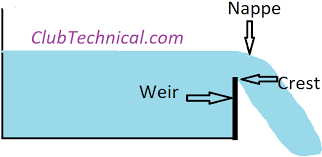Surveying
What Is
Surveying?
Surveying may be
divided into two general categories.
- Geodetic Surveying and
- Plane Surveying.
1. Geodetic Surveying:
Geodetic
surveying is a particular type of surveying where the curvature of the earth is
taken into account. Since the earth has a spherical shape, the line connecting
any two points on the earth’s surface is curved or is an arc.
Hence it involves spherical trigonometry.
In geodetic surveying, large distances and areas are measured and its degree of
accuracy is comparatively high.
2. Plane Surveying:
Plane surveying is a specific type of
surveying where the surface of the earth is considered as a plane and the
curvature of the earth is not taken into account. The line connecting any two
points is a straight line and the angles of polygons are plane angles.
This type of
surveying is suitable for small and flat areas, and its degree of accuracy is
comparatively low. In America, the limit for treating a surface as a plane is
about 250 km2.
Classification of Surveying:
A. Classification based on the nature of the field:
- Land
Surveying.
- Marine
Surveying.
- Astronomical
Surveying.
Land
surveying can be sub-divided into the following categories:
·
Topographical Surveys.
·
Cadastral Surveys.
·
City Surveys.
·
Engineering Surveys.
Land surveying mainly
deals with the natural and artificial features of a country such as hills,
rivers, buildings, towns, villages, etc.
B. Classification based on
the object of the survey:
- Archaeological
survey.
- Geological
Survey.
- Mine
Survey.
- Military
Survey.
C. Classification based on the instruments:
1. Chain Surveying:
Chain
surveying is the simplest method of surveying in which the linear measurements
are directly taken in the field and the angular measurements are not taken.
This type of surveying is used over small and leveled areas.
2. Plane Table Surveying:
In plane
table surveying, the fieldwork and plotting are done using a graphical method.
It is mostly adapted for small and medium scale mapping where great accuracy is
not required.
3. Compass Surveying:
In this type
of surveying, a compass is used to determine the direction of survey lines, and
the length of survey lines are measured by a chain or tape, or laser range
finder. The compass is generally used to run a traverse line. There are three
types of compass used in surveying:
·
Prismatic compass
·
Surveyor’s compass
·
Level compass
4. Tachometric Surveying:
Tachometric
surveying is a method of surveying in which the horizontal and vertical
distances of relative points are determined without using any sophisticated
instruments such as chain, tape, etc.
5. Theodolite Surveying:
The
theodolite is an instrument that is used to measure the horizontal and vertical
angles. It allows surveyors to “triangulate” the position of objects in a
specific area. Theodolite are two types i.e transit theodolite and non-transit
theodolite. Theodolite surveying are commonly used for
i)
Prolongation
of survey lines,
4. ii) Finding the
difference in elevation, and
5. iii) Setting out
engineering works that requires higher precision, i.e. ranging highway and
railway curves, aligning tunnels, etc.
6. Photographic and Aerial
Surveying:
These types
of surveying are done by taking photographs from elevated ground stations. It
deals with the production of maps such as topographic or planimetric maps by
compiling number of photographs taken in that area.
D. Classification based on the methods of Survey:
1. Triangulation Surveying
Triangulation is a method of surveying that
measures the angles in a triangle formed by three survey control points. Using
the trigonometry formula and the measured one side’s length, the other
distances in the triangle are calculated respectively.
2. Traverse Surveying
It is also a
well known method of surveying. A traverse is a series of connected lines whose
lengths and direction are measured with the help of an angle measuring
instrument and tape or chain respectively.







Comments
Post a Comment